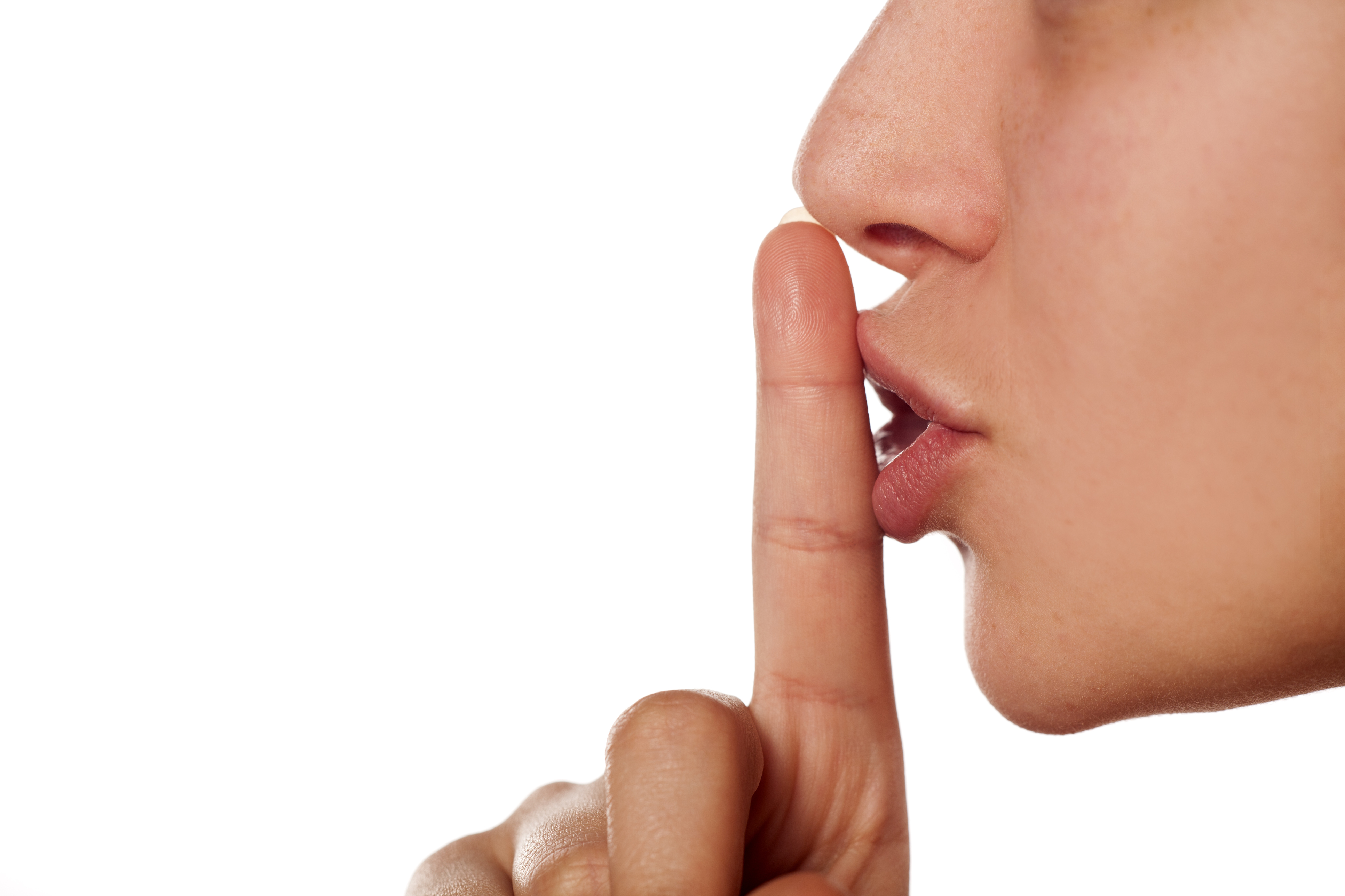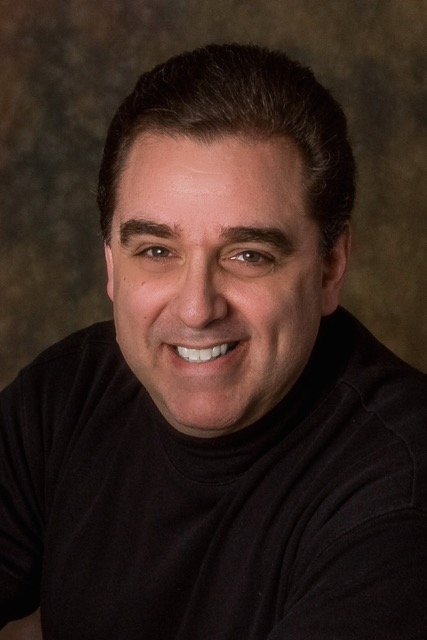Beginning with Silence
Finding “Presence” in Music Class
By NAfME member Tom Sabatino
What might happen if we all took 30 seconds each day to be silent, listen, appreciate, and celebrate the present moment?
I read a book one summer that changed the way I taught, because it changed the way I viewed life. I learned about “becoming present” in everyday life. I learned about surrendering past memories as a mere construct of my brain; a brain obsessed with overthinking about either the past or the yet-to-exist future. I had to appreciate the present moment, and to do that, I had to let go of the misconception that “I” existed in my brain, and embrace that I was more than my mind – I was the consciousness behind my mind.
Much has been written on how to shed the bonds of overthinking, spending our lives stuck in our heads, dwelling on the past or stressing about the future. Little if any of our lives is devoted to being present, or living in the present moment. Many have called this being “mindful,” or the practice of “mindfulness.” This way of thinking, or not thinking, had such a profound effect on my outlook that I wondered if (and how) I could make use of it in my teaching. After some careful thought, I decided that the simple act of becoming aware of silence might be a starting point.
But what would my music students think about their teacher talking to them about silence?

A Lesson on Silence
In my teaching, I had always stressed how rests are just as important as notes; the “sound off” just as meaningful as the “sound on,” so I could justify moving forward with this idea.
I started by creating a lesson based on silence. Every class, no matter how big or small, received the same lesson. This is basically how it sounded:
“We’re going to start the class a little differently today by trying an experiment. For the next 60 seconds, we are going to sit in total silence. Ready . . . Set . . . Go!”
The first 20-30 seconds seemed to be relatively easy, but past that, every 10 seconds became more and more excruciating for the students. By the time we reached 60 seconds, the sound came blurting out of everyone!
“Oh my god, that was awful!” “I’ve never done that in my entire life!” “Why in the world would anyone want to be quiet for that long?” These were some of the comments that came from most of the students.
I then asked the question, “How did the silence make you feel?” Here are some of the words they used to describe their feelings: uncomfortable, painful, stressful, weird, different, not normal.
Wow, I thought, what does this say about our lives? In this era of smart devices and instant communications along with the constant background noise of life, have we driven ourselves so far to the edge that we cannot appreciate even 60 seconds of silence? Apparently, this was the case—at least in my classrooms.
Now what?
A Different Approach
I wrote their comments on a section of the board under the heading “Do Not Erase,” and decided to approach this in small chunks, a little each day. The entire exercise took about 20 minutes after some discussion, and I really didn’t want to spend that much time every day on this topic. So I refined my approach. The very next class, after everyone took their seats and the bell rang for class to start, I was ready.
“Remember yesterday how we talked a little about silence and how you felt about it? Well today, we’re going to try a short exercise. Sit comfortably in your chairs, place your hands gently on your knees or in your lap, and close your eyes. For the next 30 seconds, focus only on your breathing. Ready? Go!”
To my amazement, it was quiet. At the end of 30 seconds I said, “Slowly open your eyes and take a deep breath!”
That’s it! Done. I moved on to the lesson. This was integrated into the beginning of every class before we did anything else. It came to be known by my students as “Thirty Seconds of Silence.”
The more we practiced this simple task, the more the students came to appreciate what was becoming the only time in their busy day when they were quiet, still, and to some degree, at peace. Occasionally we might have a very brief discussion about how they felt before and after the 30 seconds of silence. Some would say they felt no difference. Most, however, would say they felt as if the practice helped them clear their minds before engaging in a new activity. This was more apparent to me as their teacher because I felt that the mind-clearing time offered a buffer between whatever class or situation they came from and my class.
To my surprise, I noticed an increase in the productivity of my classes when we were faithful to the ritual. And indeed, it had become a ritual, because if for any reason I forgot about it, my students were very quick to remind me that they needed their 30 seconds of silence before we began our lesson.

True Enrichment
It also wasn’t long before I heard about it from other teachers. “What are you doing in your class, Mr. Sab? Kids are telling us they want us to let them have 30 seconds of silence before we start math or science.” But while it didn’t catch on in other classes, it stuck with my own classes for several years. Sometimes, we would use the time after our 30 seconds to talk about an issue that was happening in the school, like when a fellow student had passed away suddenly, a social issue in the news, or way to calm down and focus before a performance. It came to represent a safe harbor where my students could talk about things that were meaningful to them. And just as importantly, I was learning about them as people. They were not just my students, they were each an individual person who needed attention and nurturing. It was a beautiful thing. Over time, the teacher-student relationship in my classes became so much more enriched.
This seemingly simple exercise also started to serve as the gateway to helping my students become more present in their work in my class, and with luck, in their lives. Sometimes we even experimented with some “guided meditation” during the 30 to sometimes 60 seconds (or more) of silence. These then became the catalyst to discussions about the text of music, or extended questioning about the music itself.
“Music is born out of silence.”
When I began to listen and hear the types of responses I was receiving from my students, I was amazed! The insights, creativity and even wisdom with which some of these 9-12th grade students spoke were astonishing. We discussed poetry, philosophy, religion, tolerance, and history. The discussions were always carefully guided so as to avoid eating up too much class time, and from becoming an unintended therapy session. There was always a purposeful and clear objective in my mind before asking any question in the class. I would think through the question to many possible answers, trying to get into their heads to construct an arena for thoughtful discussion with a safety net and the ability to redirect when necessary. This practice then led to my including a small composition notebook in every student’s choir folder. At least once a week, I gave the students time to write a reflection on a writing prompt I provided. It was a timed exercise so it would fit into my lesson plan. Students could take their journals with them if they wanted to write more, but always with the intent of returning and keeping their journals in the choir folder.

People First, Students Second
Over time, I made it a point to “tell” my students that I was most interested in them as people first, and students second. I cared deeply about them all as individuals. “People first, students second.” I believe this logic helped me become a more effective teacher simply because how we treat each other as human beings can have a profound effect on the quality of our relationships with each other. If I really wanted my students to listen to me, I believe that it was most important that I listen to them as well, and in turn, that they listen to each other.
While it is true that even though we were learning to sing, interpret music and all the skills that one can learn in a music classroom, music can be most effective in helping students learn the life skill of listening, and listening well. Composer John Rutter once said, “Music is born out of silence.” I believe that learning to listen begins with silence. The first step may be 30 seconds.
What would happen in our country, even our world if we shared an appreciation for silence? Couldn’t we all use help in listening more effectively? Silence leads to listening, which can lead to empathy, understanding, and then ultimately, respect. What might happen if we all took 30 seconds each day to be silent, listen, appreciate, and celebrate the present moment? What might we hear along with the sound of our own breathing? Perhaps we might really hear each other for the first time.
About the author:

NAfME member Tom Sabatino currently works as the Manager of Choral Product Sales for J.W. Pepper & Son. Prior to working with Pepper, Tom taught general, instrumental, and vocal music in Delaware public schools for 31 years. He was active in the Delaware Music Educators Association where he served as President and All-State Chorus Chair, and ACDA where he served as chair for High School Standards and Repertoire. Tom still holds active memberships in NAfME and ACDA, and is a freelance voice actor.
